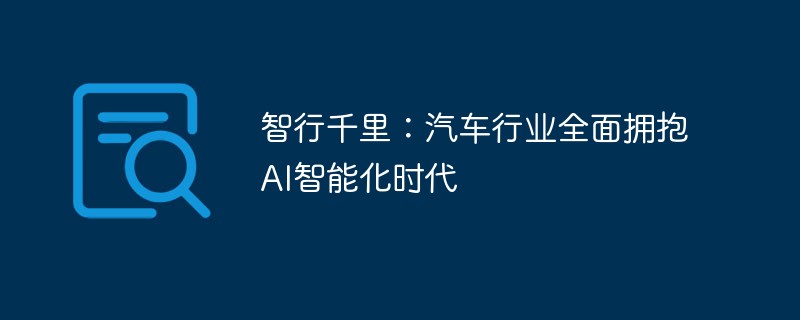With the continuous development of science and technology, trusted computing technology is increasingly used in various fields. In the agricultural field, the application of trusted computing technology has also attracted more and more attention. This article will discuss the application of trusted computing technology in the agricultural field, including problems existing in the agricultural production process, application scenarios and specific application cases of trusted computing technology in agricultural production.
1. Problems in the agricultural production process
In the traditional agricultural production process, there will be a series of problems. First of all, because agricultural production requires a lot of manual operations, production efficiency is low and costs are high. Secondly, in the traditional agricultural production process, there is a lack of effective information system, making it difficult to understand the actual situation of agricultural production in a timely manner and to make scientific decisions. Finally, the lack of effective supervision mechanisms in the traditional agricultural production process has led to irregular production practices, which in turn has affected the quality and safety of agricultural products.
2. Application scenarios of trusted computing technology in agricultural production
Trusted computing technology can provide effective solutions to problems existing in agricultural production. In the agricultural production process, we can use trusted computing technology to realize the following application scenarios:
- Precision Agriculture
Precision agriculture is a typical scenario for applying trusted computing technology one. Data collection and analysis can be achieved by collecting data such as the growth environment of field crops and satellite images through drones, sensors and other equipment. Through large-scale data analysis and modeling, measures such as prediction of growth patterns, early warning of occurrence of pests and diseases, implementation of agricultural mechanization, and precise standards for pesticide and fertilization can be carried out. These measures can reduce crop losses due to human factors and improve agricultural production efficiency.
- Quality traceability of agricultural products
In traditional agricultural production, the quality of agricultural products cannot be guaranteed, and problems in production are difficult to quickly feed back to producers. With the help of trusted computing technology, the quality traceability of agricultural products can be achieved. During the production process, every step can be recorded, including planting, fertilizing, pesticide use records, etc. These data can be encrypted and stored on the blockchain before the agricultural products leave the field, ensuring that each data collection cannot be tampered with to ensure food safety.
- Agricultural Production Risk Assessment
With the help of trusted computing technology, data analysis methods can be used for agricultural production to evaluate the impact of climate, weather and other factors on agricultural production risks. . This method can promote the transformation of agriculture from the past risk of returning to poverty to a new round of risk management. For farmers, this institutional risk management method can provide farmers with more and more correct decision-making basis.
3. Application cases of trusted computing technology in the agricultural field
- Large livestock and poultry farms
In large livestock and poultry farms, usually Use sensors and other equipment to monitor livestock and poultry in real time, monitor and record their growth cycle, dietary status and other information. These data can be fully utilized, and through data analysis, we can find the demand patterns of animals, encourage animals to eat at the right time, and make better use of forage. By combining with blockchain technology, the origin of each protein and energy element involved in production can be traced, thereby improving product quality and traceability.
- Agricultural Products Park
Agricultural products park is one of the typical scenarios where trusted computing technology is applied. For example, in fruit and vegetable growing areas, especially fragile vegetables such as cauliflower and lettuce, insect control and fertilization are carried out within a certain period of time. Through plant analysis, environmental data monitoring and dynamic monitoring, agricultural products can be managed more effectively. For example, through real-time monitoring and data analysis of the growth environment of cauliflower, the growth cycle of cauliflower can be controlled within optimal conditions, thereby improving its quality.
IV. Conclusion
With the continuous development of science and technology, the application of trusted computing technology has penetrated into all aspects of people's lives, and the agricultural field is no exception. By applying trusted computing technology, application scenarios such as precision agriculture, agricultural product quality traceability, and agricultural risk assessment can be realized, solving problems existing in traditional agricultural production. The application of these technologies will greatly promote the development of agriculture, improve agricultural production efficiency, ensure food safety and protect the ecological environment.
The above is the detailed content of Application of trusted computing technology in agriculture. For more information, please follow other related articles on the PHP Chinese website!
 智行千里:汽车行业全面拥抱AI智能化时代May 25, 2023 pm 02:22 PM
智行千里:汽车行业全面拥抱AI智能化时代May 25, 2023 pm 02:22 PM人工智能也是开启汽车行业未来价值的关键所在。虽然人工智能在自动驾驶领域的应用备受瞩目,但是人工智能的用武之地远不止此,汽车行业在研发、生产、供应链、客户体验和出行服务等诸多领域都在推进人工智能的应用。精选100+细分行业专题内容,公众号:参一江湖公众号:参一江湖近期分享:2023AIGC产业发展及应用白皮书2023年中国白酒行业消费白皮书2023中国乡村数字化发展研究报告2023年12大兴趣消费趋势2023中国新消费趋势白皮书2023抖音趋势赛道风向标2023薪酬指南
 如何使用PHP表单安全技术保护CookieJun 24, 2023 am 08:26 AM
如何使用PHP表单安全技术保护CookieJun 24, 2023 am 08:26 AM随着现代化的网站越来越依赖于用户交互和身份验证,Cookie成为了一种相对较为普遍的处理会话数据的手段。然而,如果Cookie存储的信息不够安全,那么我们的网站也会因此面临着很大的风险。PHP作为一种广泛使用的服务器端脚本语言,提供了一些有用的表单安全技术,可以帮助我们有效地保护Cookie。一、使用HttpOnly标志HttpOnly是一种用于指示浏览器的
 WebMan技术在教育领域的应用与创新Aug 27, 2023 am 10:28 AM
WebMan技术在教育领域的应用与创新Aug 27, 2023 am 10:28 AMWeb技术在教育领域的应用与创新引言:随着互联网的迅速发展,Web技术在各个领域的应用越来越广泛。在教育领域,Web技术也发挥了巨大的作用。本文将探讨一种名为WebMan的技术在教育领域的应用与创新,并附上相应的示例代码。WebMan技术简介WebMan技术是一种基于Web的管理系统,旨在帮助教育者更高效地管理教学过程,提供个性化的学习体验。WebMan技术
 可信计算技术在数据共享领域的应用Jun 11, 2023 am 08:49 AM
可信计算技术在数据共享领域的应用Jun 11, 2023 am 08:49 AM随着数据产生和流动的加速,数据共享成为了信息领域中一个越发重要的议题。在数据共享的过程中,数据安全与隐私一直是人们所关注的问题之一。而可信计算技术的出现,为保障数据安全和隐私提供了一种新的解决方案。本文将从可信计算技术原理、数据共享场景、技术应用等方面介绍可信计算技术在数据共享领域的应用。一、可信计算技术原理可信计算技术(TrustedComputing
 可信计算技术在区块链中的应用Jun 11, 2023 am 10:07 AM
可信计算技术在区块链中的应用Jun 11, 2023 am 10:07 AM随着区块链技术的不断发展,可信计算技术的应用也愈发广泛。可信计算是指通过软硬件等多种机制,确保计算机系统的运行结果正确、完整和保密,从而提高计算机系统的安全性、稳定性和可靠性。而区块链技术的本质是对分布式账本的管理,保证数据的安全、可靠和隐私。可信计算技术与区块链技术的结合,能够提供更高层次的安全保障,本文将探讨在区块链中可信计算技术的应用。一、可信计算技
 如何验证一台设备是否支持可信计算技术?Jun 11, 2023 am 08:58 AM
如何验证一台设备是否支持可信计算技术?Jun 11, 2023 am 08:58 AM随着数据泄露和网络攻击事件不断发生,安全性一直是互联网技术的热点话题。为了提高数据安全保障水平,可信计算技术应运而生。可信计算技术可以保证计算过程和计算结果的完整性、保密性和信任度,保证企业、组织、个人信息安全。在这篇文章中,我们将探讨如何验证一台设备是否支持可信计算技术。可信计算技术是基于硬件的安全技术,可以支持软件应用在运行时的安全处理。因此,验证一台设
 可信计算技术在农业领域的应用Jun 11, 2023 am 11:45 AM
可信计算技术在农业领域的应用Jun 11, 2023 am 11:45 AM随着科技的不断发展,可信计算技术也越来越多地应用于各个领域。在农业领域中,可信计算技术的应用也越来越受到人们的重视。本篇文章将讨论可信计算技术在农业领域的应用,包括农业生产过程中存在的问题,可信计算技术在农业生产中的应用场景及具体的应用案例。一、农业生产过程中存在的问题在传统的农业生产过程中,会存在一系列的问题。首先,由于农业生产需要大量的人工操作,所以生产
 可信计算技术在区块链中的角色和作用Jun 11, 2023 am 09:49 AM
可信计算技术在区块链中的角色和作用Jun 11, 2023 am 09:49 AM随着区块链技术的飞速发展,可信计算技术作为区块链技术中的一个关键组成部分,日益受到人们的关注。可信计算技术与区块链技术的结合,不仅将区块链技术的安全性和可信性得以进一步提升,还为实现更多的商业应用提供了更加可靠的技术支持。一、可信计算技术简介可信计算技术是一种通过硬件/软件的方式,在计算机持续运行的过程中提供一系列安全保障的技术。主要功能是确保计算机系统中


Hot AI Tools

Undresser.AI Undress
AI-powered app for creating realistic nude photos

AI Clothes Remover
Online AI tool for removing clothes from photos.

Undress AI Tool
Undress images for free

Clothoff.io
AI clothes remover

AI Hentai Generator
Generate AI Hentai for free.

Hot Article

Hot Tools

Dreamweaver Mac version
Visual web development tools

mPDF
mPDF is a PHP library that can generate PDF files from UTF-8 encoded HTML. The original author, Ian Back, wrote mPDF to output PDF files "on the fly" from his website and handle different languages. It is slower than original scripts like HTML2FPDF and produces larger files when using Unicode fonts, but supports CSS styles etc. and has a lot of enhancements. Supports almost all languages, including RTL (Arabic and Hebrew) and CJK (Chinese, Japanese and Korean). Supports nested block-level elements (such as P, DIV),

PhpStorm Mac version
The latest (2018.2.1) professional PHP integrated development tool

SublimeText3 Chinese version
Chinese version, very easy to use

MinGW - Minimalist GNU for Windows
This project is in the process of being migrated to osdn.net/projects/mingw, you can continue to follow us there. MinGW: A native Windows port of the GNU Compiler Collection (GCC), freely distributable import libraries and header files for building native Windows applications; includes extensions to the MSVC runtime to support C99 functionality. All MinGW software can run on 64-bit Windows platforms.






